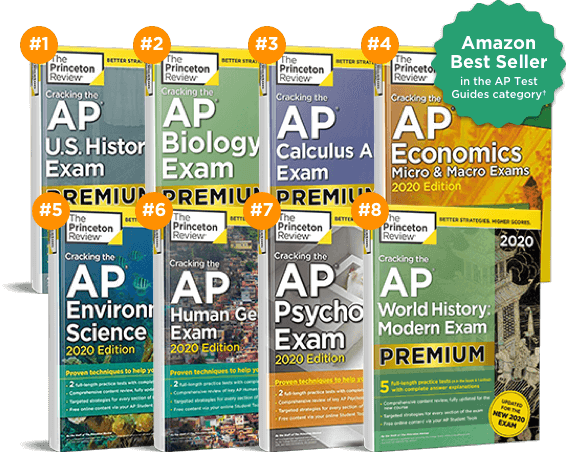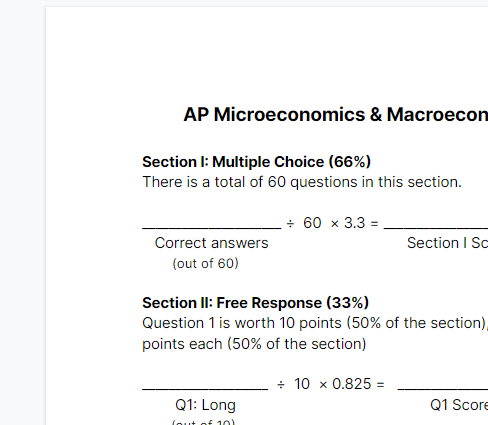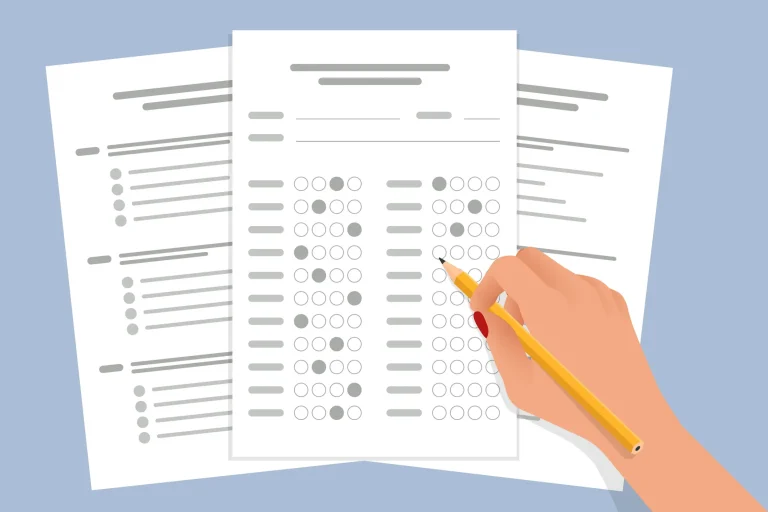The AP Calculus BC exam is approaching! For students who plan to take the AP exam this spring, this is the perfect time for you to start preparing, so you won’t jam all the lessons into the last minute. If you’re looking for a study guide for any AP exam, don’t forget to check out our article discussing study steps for AP.
Below, we provide the 4 ultimate AP Calculus BC tips that you should know about when learning Advanced Placement Calculus BC. Before going over the tips, we recommend you fully understand what topics will be covered in the exam. Let’s take a look at the course content and format of the exam first!
Unit | Exam Weighing (BC) |
Unit 1: Limits and Continuity | 4-7% |
Unit 2: Differentiation: Definition and Fundamental Properties | 4-7% |
Unit 3: Differentiation: Composite, Implicit, and Inverse Functions | 4-7% |
Unit 4: Contextual Applications of Differentiation | 6-9% |
Unit 5: Analytical Applications of Differentiation | 8-11% |
Unit 6: Integration and Accumulation of Change | 17-20% |
Unit 7: Differential Equations | 6-9% |
Unit 8: Applications of Integration | 6-9% |
Unit 9: Parametric Equations, Polar Coordinates, and Vector-Valued Functions | 11-12% |
Unit 10: Infinite Sequences and Series | 17-18% |
The 2024 AP Exams will be administered in schools as paper-and-pencil* exams over two weeks in May. The AP Calculus BC exam will include:
Section 1 – 45 multiple choice questions have two parts:
- Part A: 30 questions; 60 minutes (calculator not permitted).
- Part B: 15 questions; 45 minutes (graphing calculator required).
- Questions include algebraic, exponential, logarithmic, trigonometric, and general types of functions.
- Questions include analytical, graphical, tabular, and verbal types of representations.
Section 2 – 6 Free-response questions
- Part A: 2 problems | Graphing calculator required (16.7%)
- Part B: 4 problems | Graphing calculator not permitted on the paper exam; questions on the digital exam will be written such that calculator use would not help answer the question (33.3%)
- Questions include various types of functions and function representations and a roughly equal mix of procedural and conceptual tasks.
- Questions include at least two questions that incorporate a real-world context or scenario into the question.
Now, let’s move on to the tips to nail the AP Calculus BC exam!
Tip 1: Study the practice test
Practice makes perfect! To score a five on your AP Calculus exam, you will need to practice the problems you’re struggling with as well as perfect the questions you’re comfortable with. The more problems you do, the more familiar you will be with the kind of approach and answers to those problems.
Starting from February, you can do one practice test each week, and take note of questions you get wrong or the concepts you don’t understand. In the weeks leading up to the exam, you can increase the number of practice tests and problems.
College Board provides excellent past tests and practice questions from 1998 to 2019. There are also prep books on the market that provide AP-style practice tests. However, remember to select books from credible and famous companies like College Board itself, Magoosh, The Princeton Review or Kaplan.

Tip 2: Make a study plan
Planning takes part in 50% of your success in the AP Calculus test. With proper planning, you will study smarter and memorize more formulae and concepts while training your brain to be comfortable with solving calculus problems. Studying is like exercising, you won’t achieve your body goals in 1 day of intense exercise, but only after days of endless effort and hard work.
We’ve integrated Magoosh’s 3-month study plan with our tutor’s advice, based on the deadline of the AP Calculus BC digital exam in 2022 to help you succeed!
| Week | Practice Test | BC Review |
| Week 1 (2/12 – 2/18) | 2 Practice Tests | Review test |
| Week 2 (2/19 – 2/25) | Limits, Continuity, asymptotes, etc. | |
| Week 3 (2/26 – 2/3) | Derivative rules | |
| Week 4 (2/4 – 3/10) | 2 Practice Tests | Review test |
| Week 5 (3/11 – 3/17) | Applications of derivatives | |
| Week 6 (3/18 – 3/24) | Antidifferentiation rules | |
| Week 7 (3/25 – 3/31) | 3 Practice Tests | Review test |
| Week 8 (3/1 – 4/7) | Applications of integrals | |
| Week 9 (4/8- 4/14) | Vector, parametric, and polar functions | |
| Week 10 (4/15 – 4/21) | 3 Practice Tests | Review test |
| Week 11 (4/22 – 4/28) | Sequences and Series | |
| Week 12 (4/29 – 5/5) | 3 Practice Tests | Review test |
| Week 13 (5/6 – 5/12) | Practice Test 2018 + 2019 + 2020 | All topics |
| Week 14 (5/13) In School examination time | AP Calculus Exam Day! |
Tip 3: Strategies for each question type
The Multiple-Choice Section
We will first discuss multiple-choice questions in the paper exam. When it comes to multiple-choice questions, you should first skim through all the questions and note problems you struggle with to come back later. With the exam’s time limit, you will only have 2-3 minutes per question; therefore, spending less time on problems you’re comfortable with will give you more time to work on the more challenging questions. After finishing all the questions in the test, you can go back and double-check your answers.
Another great tip for multiple-choice questions is putting a temporary answer on your bubble sheet to mark the finished question, like a dash or an X sign. This temporary answer will give you an overview of the remaining questions and prevent you from filling in answers in the wrong section.
Now, with the offerings of digital exams in response to the pandemic situation, what you should do to nail the multiple-choice question?
Because with the digital exam, students are not allowed to move back-and-forth between unanswered questions, we recommend that you should do the elimination method within the limited time frame if you don’t know the answer to a question. If you are completely blank on a question and time is running out, eliminate the wrong answers and make an educated guess. Because with the elimination method, you will have at least 25% to guess it right!
The Free-Response Questions
Remember the difference between Part A and B: Part A requires a graphing calculator, and Part B does not permit one. For the calculator-required portions, it is important to check which graphing calculators are permitted and which are not. You can bring up to 2 permitted calculators to the exam. You don’t need to clear your calculators’ memories before or after the exam.
The most important points to remember for the free-response questions are your reasoning and process. Answers without a strong rationale won’t give you credit, so show your work! The exam grader will evaluate not only correct answers, but also your process and method of solving the problem. Because the free-response section is timed, remember to track your time and pace out questions, if possible.
Tip 4: Review all important formulas
Because there’s no formula sheet given on the AP exam, you will have to memorize them correctly to apply and solve problems. Teachers at your school will provide you or help you to create a formula/concept cheat sheet for you to learn.
We recommend that you should not memorize it by heart, but to know how to apply all the formulas and solve problems using those formulas to train your long-term memory. Calculus is a challenging subject, and we’re proud that you decided to take the AP BC Calculus exam. Mastering Calculus knowledge will give you a tremendous advantage if you go to a STEM major in college and benefit you in the future career.
Major formulas you should have memorized include those for limits, differentiation, and integration, as well as the fundamentals. An example list of formulas for AP Calculus BC that you should know 100% before taking the exam — remember to check it out!
If you prefer receiving a calculus course prep, where you meet a tutor in a small group or one-on-one setting, Aralia is offering an AP Calculus BC test prep program that will review the important knowledge in the exam so that you will be confident to nail the exam. Taught by an experienced AP Calculus BC teacher, from a top boarding school, the course will cover multiple-choice questions and free-response questions, as well as provide practice problems and exams for homework.
Introducing Aralia Test Preparation Bootcamp, where students can excel in standardized tests with our comprehensive approach. At Aralia, we prioritize maximizing study efficiency and accelerating score improvement through a combination of practice examinations, expert strategies, and personalized guidance. Our Bootcamp offers students the opportunity to achieve significant score improvements within a condensed timeframe by learning strategic approaches tailored to their individual needs. With instructors who are AP readers, students benefit from expert teaching and gain valuable insights into exam techniques. Furthermore, our program equips students with versatile skills and strategies that can be applied to a range of standardized tests, ensuring they are well-prepared to adapt to various exam types.

FREE AP Scoring Worksheet
With the scoring worksheet, you will be able to calculate your target score in preparation for the upcoming exam in May. We also have a full scoring worksheet available below if you want to print it out and keep it in your folder.
Improve your AP score with this AP Calculus BC course. Taught by an experienced AP Calculus teacher from Hotchkiss School, the course will review the important knowledge in the exam. In addition, the teacher will cover multiple-choice questions and free-response questions.








